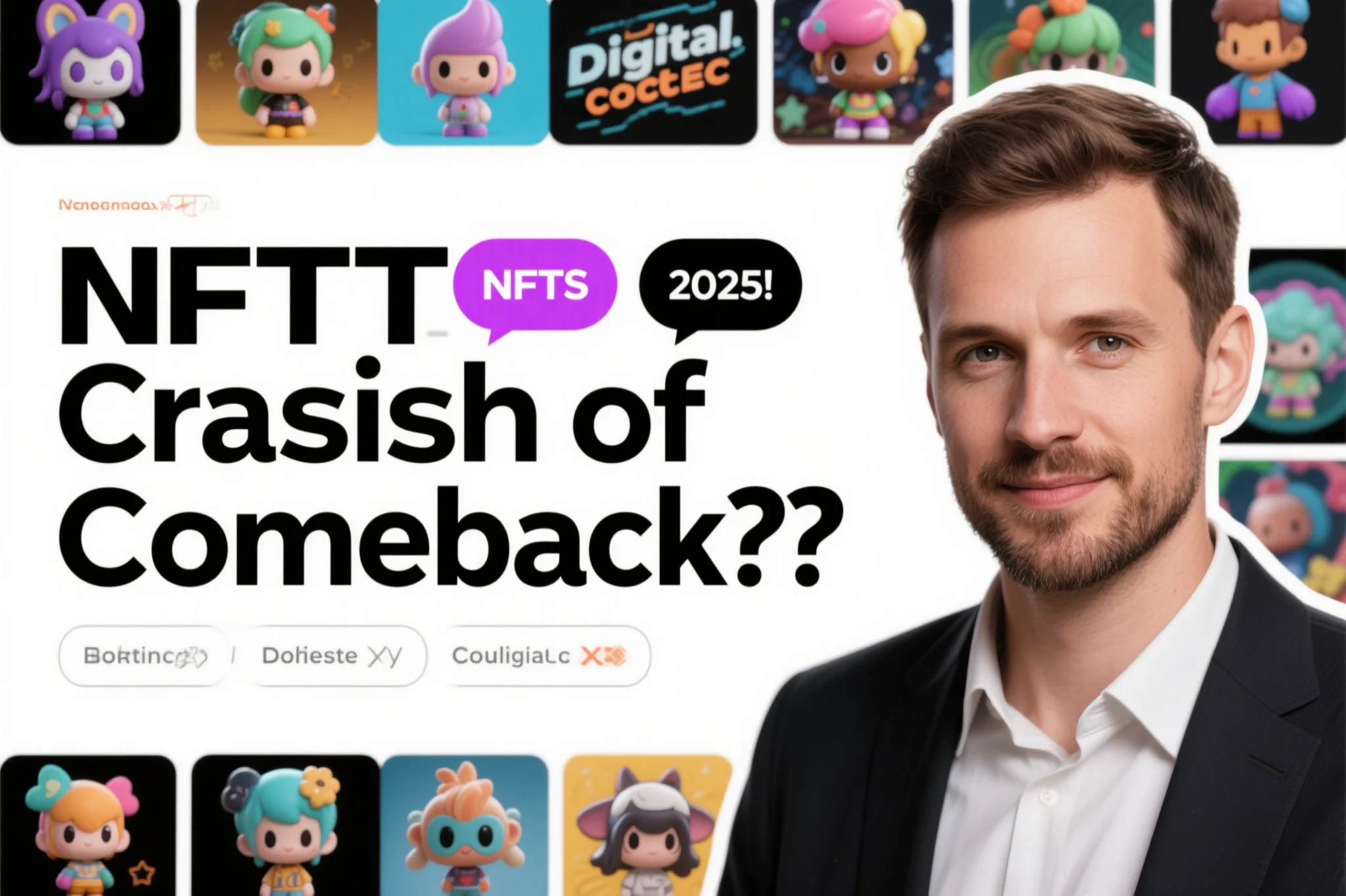
NFTs were the shining star of the blockchain world just a few years ago, with digital artists, musicians, and collectors pouring billions into the trend. But fast-forward to 2025, and the once-booming market has cooled dramatically, leading many to ask: is this the end of the digital assets era, or are we witnessing a strategic pause before a massive rebound? The answer lies in examining the evolving landscape of blockchain utility, cultural relevance, investor sentiment, and regulatory developments shaping the space.
The Rise and Retreat of NFTs
The initial explosion of interest in NFTs was driven by the novelty of ownership in a digital world. Tokenizing digital files on the blockchain allowed creators to monetize art, music, videos, and more, all while enabling collectors to own verified, scarce digital items. However, as 2022 and 2023 unfolded, speculative buying cooled, leading to significant price drops and skepticism among retail investors. The media declared it a bubble burst, but the underpinnings of the technology tell a more complex story.
Many of the early projects lacked real-world utility, relying heavily on hype and influencer marketing. With little inherent value beyond their speculative worth, numerous crypto collectibles saw prices plummet as liquidity dried up. Yet, despite this downturn, key players in gaming, entertainment, and fashion continued building platforms and ecosystems based on NFT tech, quietly laying the groundwork for future applications that may redefine how we view digital assets.
The Quiet Expansion Behind the Scenes
While mainstream attention has drifted, institutional interest in blockchain investment has grown steadily. Major brands such as Nike, Starbucks, and Meta are investing in digital collectible strategies that tie into loyalty programs, exclusive access, and gamified experiences. These projects move away from speculative flipping and instead build around user engagement and long-term value creation.
At the same time, gaming companies have embraced NFTs in ways that enhance gameplay, such as offering player-owned skins, weapons, or achievements that carry across games or platforms. This integration supports the thesis that NFTs were never meant to be solely about art auctions—they are evolving tools for the digital economy. As the infrastructure improves and blockchain transaction costs fall, more applications emerge that could attract new audiences and investors to the space.
Shifting Regulatory and Market Dynamics
The role of government oversight has become increasingly significant. In the U.S., regulators are actively working on clearer guidelines for blockchain investment and digital ownership. Unlike the regulatory ambiguity of the early 2020s, 2025 is shaping up to be a year of greater clarity. This shift is expected to increase institutional confidence, reduce fraud, and improve overall market stability.
Clearer tax laws and consumer protections could also lead to a broader adoption curve, especially for millennial and Gen Z investors who are already fluent in digital ecosystems. This would signal a maturation of the market, transforming it from a speculative playground to a viable asset class.

New Use Cases and Cultural Integration
2025 has brought a wave of innovation to the NFT landscape. Beyond art and gaming, industries such as education, sports, real estate, and healthcare are exploring NFT integrations. Academic institutions are issuing verifiable diplomas as NFTs, sports leagues are offering tokenized moments from historic games, and property deeds are being trialed on-chain for transparent ownership.
The cultural integration of digital assets has also deepened. Music artists are releasing albums as limited NFTs that come with backstage passes or exclusive content. Fashion brands are tokenizing limited collections, blurring the line between digital and physical commerce. These crossovers are helping reframe NFTs not as speculative fads but as modern tools of engagement and ownership.
Market Recovery: Signals and Sentiment
Signs of a market rebound are visible, though cautious. Floor prices of blue-chip NFT collections have stabilized, and new collections that emphasize utility and community are gaining traction. More importantly, retail interest is gradually returning—not for quick flips, but for deeper involvement in communities tied to shared values, experiences, and rewards.
Many blockchain-native projects are adopting hybrid models that combine NFT mechanics with DeFi elements, enhancing user retention and participation. Additionally, platforms offering fractional ownership are reducing barriers for entry, making crypto collectibles accessible to a wider range of investors.
The Role of AI and Fintech in Shaping the Future
Emerging technologies are playing a pivotal role in the reinvention of the NFT space. AI is being used to curate NFT portfolios, predict trends, and personalize digital collectible recommendations. Fintech platforms are integrating NFT markets into broader investment dashboards, allowing users to treat them like any other financial asset.
This convergence between blockchain investment and fintech could position NFTs as a legitimate part of diversified portfolios. By aligning with traditional finance tools, NFTs may finally cross the threshold from fringe to mainstream, provided the volatility is managed and trust is reinforced.
Investor Outlook: Crash or Comeback?
The final verdict on NFTs in 2025 depends largely on perspective. For those who entered during the hype and held through the crash, the pain was real. Yet for those who understand cycles, infrastructure, and the slow adoption curve of disruptive technologies, the outlook remains promising.
It’s unlikely we will return to the mania of 2021. But a more mature, sustainable version of the NFT market is taking shape—one driven by utility, innovation, and real-world integration. Investors looking to explore blockchain investment would be wise to focus less on quick returns and more on use cases, partnerships, and the evolution of digital ownership norms.
Conclusion: A New Digital Renaissance?
Rather than a crash, 2025 may ultimately be seen as a period of correction and course-setting for the NFT ecosystem. The speculative froth has been skimmed off, revealing a core of projects and communities that are genuinely building the future of digital assets. What emerges next could reshape not just online culture, but how we define ownership in the digital age.
As with any frontier investment, due diligence, patience, and a long-term view are essential. The opportunities remain, but they’re evolving. NFTs aren’t dead—they’re just getting started, again.